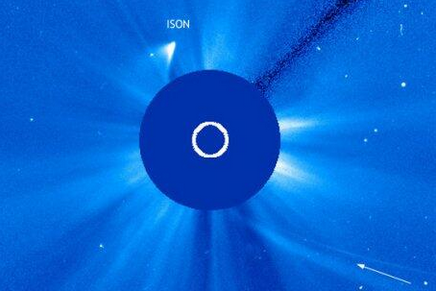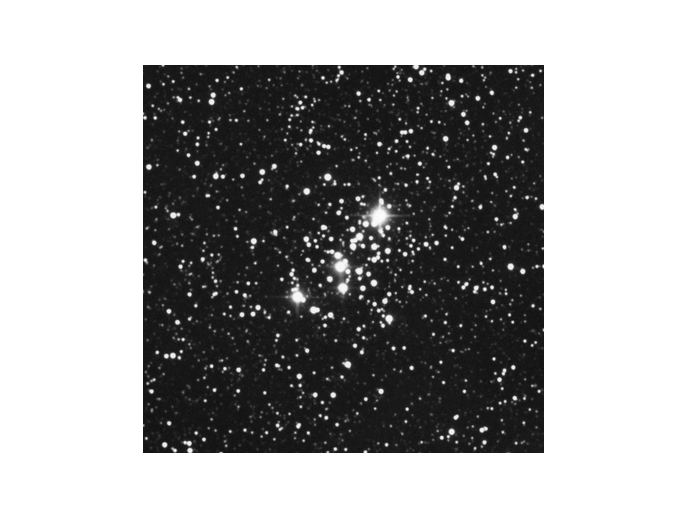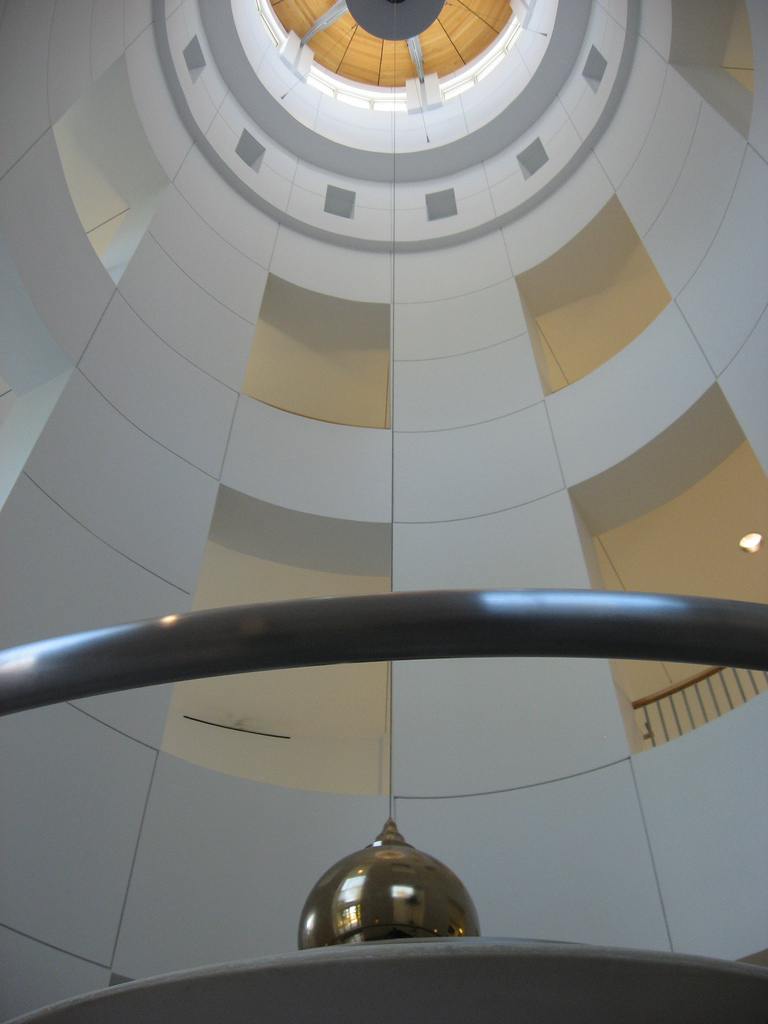Quoting from the Sky and Telescope Updates:
Dan Green of the International Astronomical Union’s Central Bureau for Astronomical Telegrams published a long summary (Electronic Telegram No. 3731) early today. Excerpts:
The comet’s nucleus apparently disrupted near perihelion, with the comet’s head fading from perhaps a peak brightness of visual mag –2 some hours before perihelion to well below mag +1 before perihelion. M. Knight, Lowell Observatory… [adds] that the brightest feature in the coma faded steadily after perihelion from about mag 3.1 in a 95”-radius aperture when the comet first appeared from behind the SOHO coronagraph occulting disk on Nov. 28.92 to about mag 6.5 on Nov. 29.98…..
K.Battams, Naval Research Laboratory, writes that, based on the most recent LASCO C3 images (Nov. 30.912 UT) … what remains is very diffuse, largely transparent to background stars, and fading; it appears that basically a cloud of dust remains….
Z.Sekanina, Jet Propulsion Laboratory … finds that the comet’s production of dust terminated about 3 hours before perihelion…
The strong forward-scattering effect (phase angles near 120-130 deg) has tempered the rate of post-perihelion fading of the comet, but the merciless inverse-square power law of increasing heliocentric distance is necessarily the dominant factor in the comet’s forthcoming gradual disappearance…




